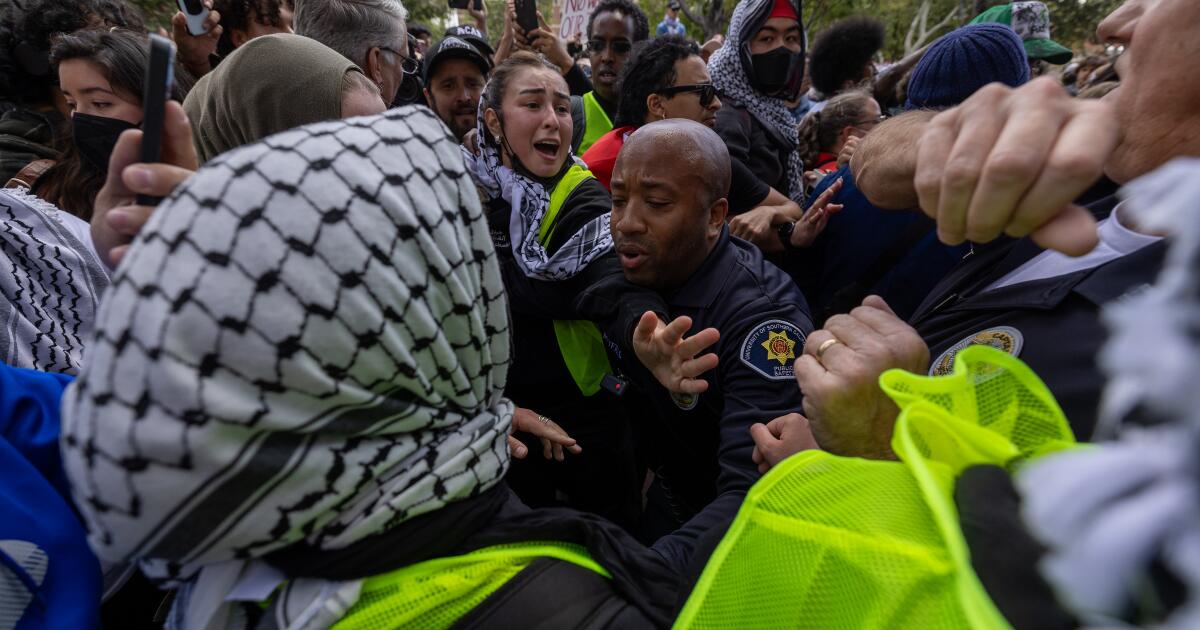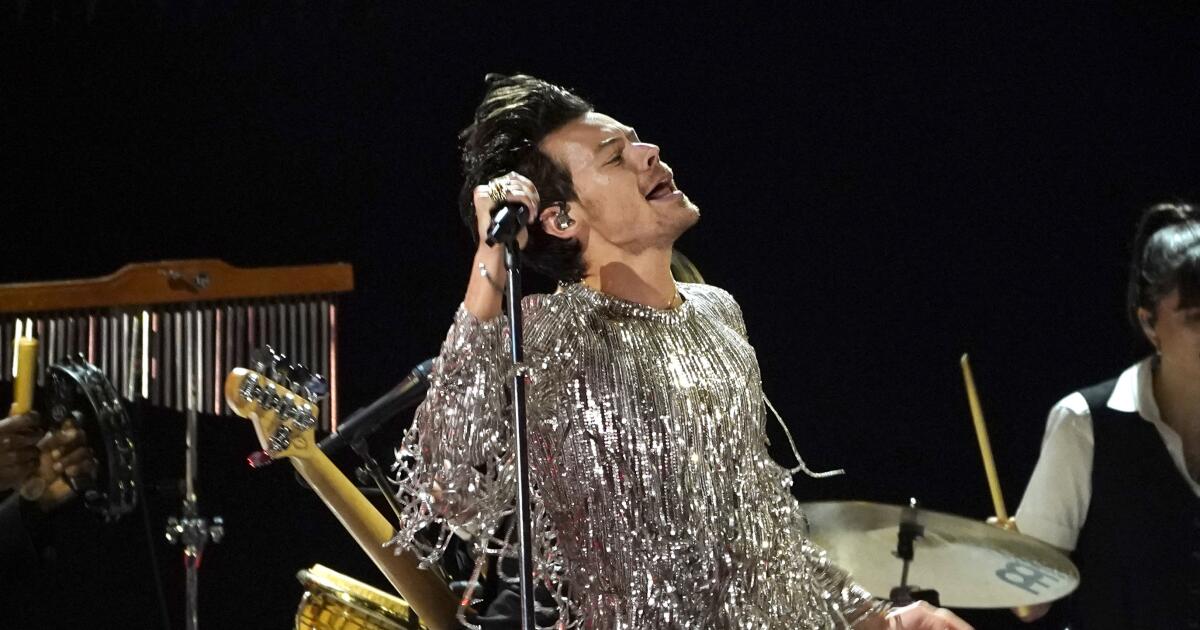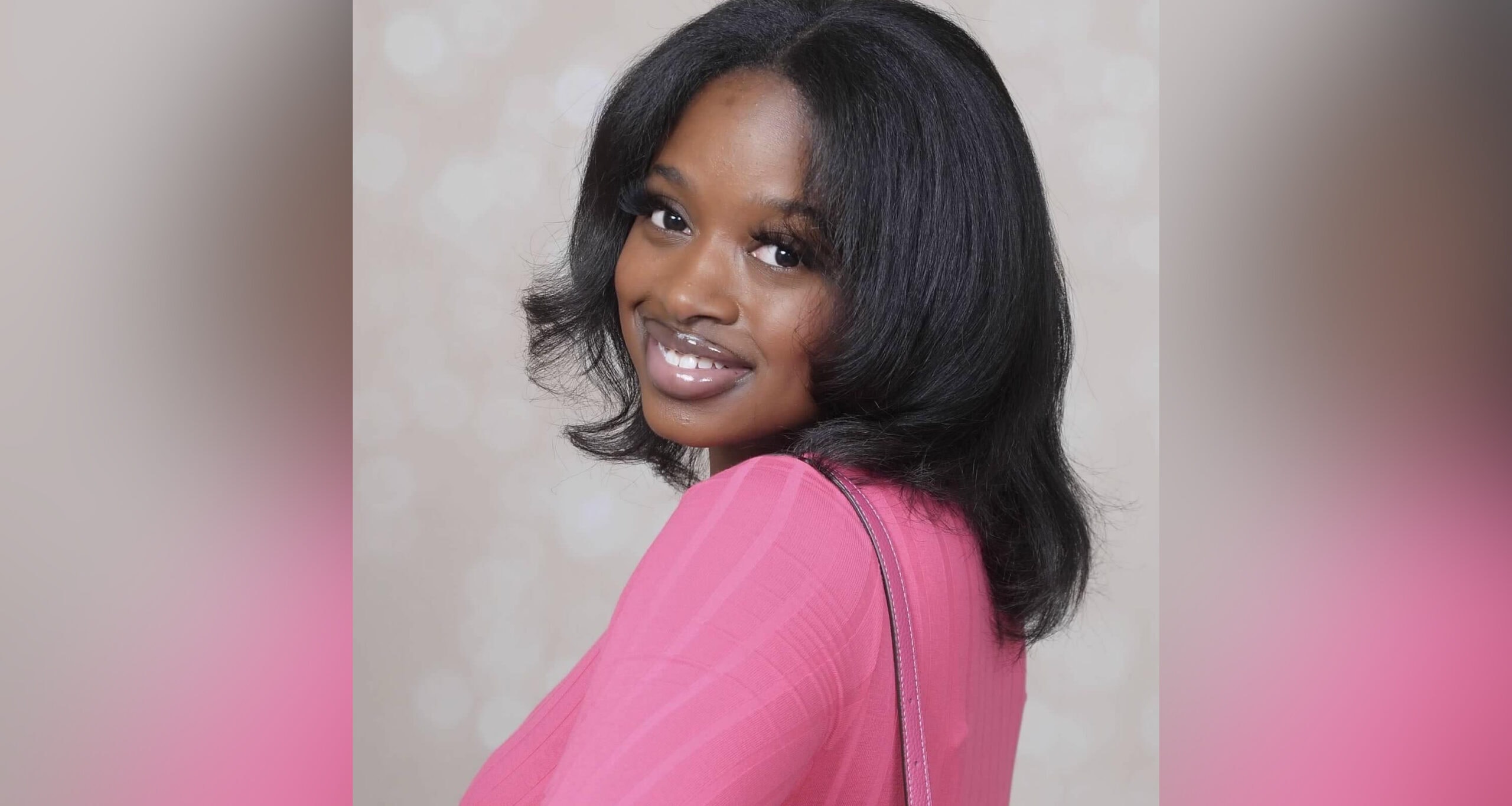Business
Column: Calling the police on campus protests show that college presidents haven't learned a thing since the 1960s

Students are massed peacefully on campus, making politically charged demands on university presidents. The police are summoned, leading to mass arrests and even to violence — and to the collapse of confidence in the administration.
You may see the punchline coming: This picture isn’t drawn from USC and Columbia University of the present day, but Berkeley in 1964.
The lessons should be obvious. Bringing police onto a college campus on the pretext of preserving or restoring “order” invariably makes things worse. It’s almost always inspired not by conditions on campus, but by partisan pressure on university administrators to act. Often it results in the ouster of the university presidents who condoned the police incursions, and sometimes even in the departure of the politicians whose fingerprints were on the orders.
Arresting peaceful protestors is also likely to escalate, not calm, the tensions on campus — as events of the past week have made abundantly clear.
— ACLU
In other words, nobody wins.
Perhaps in recognition of the astonishing ignorance of college administrators of their own responsibilities, the American Civil Liberties Union last week issued a succinct guide on how to fulfill their “legal obligations to combat discrimination and … maintain order” without sacrificing the “principles of academic freedom and free speech that are core to the educational mission.”
The ACLU advises that administrators “must not single out particular viewpoints — however offensive they may be to some members of the community — for censorship, discipline, or disproportionate punishment.”
It’s one thing for protesters or anyone else to direct harassment “at individuals because of their race, ethnicity, or religion,” the ACLU observed. But “general calls for a Palestinian state ‘from the river to the sea,’ or defenses of Israel’s assault on Gaza, even if many listeners find these messages deeply offensive, cannot be prohibited or punished by a university that respects free speech principles.”
The statement further advised that “speech that is not targeted at an individual or individuals because of their ethnicity or national origin but merely expresses impassioned views about Israel or Palestine is not discrimination and should be protected.” (Emphasis in the original.)
The ACLU cautions that “inviting armed police into a campus protest environment, even a volatile one, can create unacceptable risks for all students and staff.” Its statement points to the history of excessive force wielded by law enforcement units against “communities of color, including Black, Brown, and immigrant students…. Arresting peaceful protestors is also likely to escalate, not calm, the tensions on campus — as events of the past week have made abundantly clear.”
Finally, the statement urges administrators to “resist the pressures placed on them by politicians seeking to exploit campus tensions to advance their own notoriety or partisan agendas…. Universities must stand up to such intimidation, and defend the principles of academic freedom so essential to their integrity and mission.”
The history of campus protests suggests that they generally appear more threatening and disruptive on the spot than they prove to be over time. Strong, ‘decisive’ responses almost always backfire.
Any university administrator contemplating bringing police onto campus must reckon with what happened at Columbia in 1968, when 1,000 New York police summoned to clear student protesters out of the administration building made 700 arrests amid a melee that resulted in injuries of students and police officers alike.
Then there’s Kent State, where Ohio National Guard troops fired on a crowd in 1970, killing four students and wounding nine others, producing images of the confrontation that remain indelible today.
That brings us back to Berkeley. The free speech movement that originated at Berkeley in 1964 culminated in the student takeover of Sproul Hall on Dec. 2, following a speech by student leader Mario Savio in which he said, “There is a time when the operation of the machine becomes so odious, makes you so sick at heart, that you can’t take part.”
When UC President Clark Kerr failed to take action, Gov. Edmund G. “Pat” Brown stepped in, ordering police to clear the building. This resulted in 773 arrests, the largest mass arrest in California history.
Brown plainly was reacting to pressure from conservatives, who would come to include Ronald Reagan, who based his 1966 campaign for governor on sniping about “the mess at Berkeley.” Reagan beat Brown in a landslide, and subsequently orchestrated Kerr’s firing.
The wisdom of avoiding confrontations between law enforcement and campus protesters was lost on Linda Katehi, then-chancellor of UC Davis, who in 2011 allowed campus police to clear an encampment linked to the Occupy movement, which protested economic inequality.
A video of a campus officer casually pepper-spraying students seated on the Davis quad went viral; Katehi never fully regained her standing on campus and lost her chancellorship in 2016.
Judging from the responses to the Gaza-related protests on its campuses, UC itself seems to have absorbed the lessons of the past. Pro-Palestinian protests at UCLA, UC Berkeley and UC Santa Barbara have been tolerated by their administrations, as my colleague Teresa Watanabe has reported, and to date haven’t resulted in confrontations with law enforcement.
That may be the product of the 2011 episode, which yielded a systemwide review and report outlining best practices for dealing with campus protests. The report called for “a substantial shift away from a mindset that has been focused primarily on the maintenance of order and adherence to rules and regulations to a more open and communicative attitude,” with police force used as the very last resort.
That’s not the case at Columbia, USC or some other universities where police have been deployed almost as the first resort. At USC, police in riot gear made 93 arrests April 24 in clearing a protest encampment.
The university has failed to get its arms around the protests; its missteps began with its cancellation of a commencement speech by its valedictorian, Asna Tabassum, a Muslim, over unidentified “threats.” Since then, the university has doubled down by canceling its main commencement ceremony. Numerous speakers tapped for keynote speeches at other academic commencements have canceled their appearances.
Some university leaders may be trying to demonstrate a strong hand in managing their campuses, but the message they communicate is the opposite. “They look weak, they look mostly like they are appeasing hostile outsiders who have no intention of being appeased,” Timothy Burke, a professor of history at Swarthmore College, has written.
Texas Gov. Greg Abbott, for example, bragged in 2019 of signing “a law protecting free speech on college campuses.” But he responded to an encampment at the University of Texas by saying the demonstrators “belong in jail” and “should be expelled,” an indication that his devotion to free speech is selective. State and local police raided the encampment, arresting 57.
If the history of appeasement doesn’t sufficiently teach that appeasement never works, the actions of today’s cynical goons such as Abbott, Rep. Elise Stefanik (R-N.Y.) and House Speaker Mike Johnson (R-La.) demonstrate that they aren’t in this game to be appeased.
They don’t care a hoot about the “safety” of students, or about the rise of antisemitism nationally, or about hurtful rhetoric emanating from the tent colonies on campus, which they claim to be their concerns. Instead, they’re trying to exploit what appears to be a violent situation to pursue their larger campaign to demonize higher education — in fact, education generally — by softening it up for the imposition of right-wing, reactionary ideologies.
One would hope that this message hit Columbia President Minouche Shafik squarely after she staged a show of forcefulness April 18 by calling on the New York Police Department to clear an encampment on that campus’ central lawn; officers in riot gear arrested 100 individuals. That came the day after Shafik faced a lengthy grilling by Stefanik and other Republicans on a House committee about reported antisemitic incidents on and around the Manhattan campus. (Disclosure: I hold a Columbia graduate degree.)
Shafik’s appeasement was unavailing. Three days after the police incursion, Stefanik called on Shafik to “immediately resign” for having “lost control” of the campus. Speaker Johnson followed up three days later by visiting Columbia and also calling on Shafik to resign “if she cannot immediately bring order to this chaos.”
Shafik is still trying to show a strong hand. Columbia’s efforts to clear the encampment occupying a corner of its campus lawn has been excessively punitive: Students who have been suspended in connection with the encampment have been barred from campus facilities, including its libraries, classrooms and the common spaces of their dorm rooms.
Monday, participants in the protest were given until 2 p.m. to clear out and identify themselves to campus police, on pain of suspension that would prevent them from taking final exams or graduating, if they were scheduled to do so this year.
The politicians issued their calls for action after fostering the impression that the campus protests are violent. In the case of Columbia and USC, this is largely a fiction. The Columbia encampment was “fairly calm” and reports that Jewish students feared for their safety “ridiculous,” Milène Klein, a Columbia senior and member of the opinion page board of the Daily Spectator, the campus newspaper, told Slate.com on April 22.
The police presence was what created the tension, Klein said. “We have prison buses around campus, and an egregious amount of police officers off and on campus,” she said. “The presence has been very overwhelming.”
As my colleague Lorraine Ali points out, media coverage of the campus demonstrations and the official responses has tended to erase the goal of the protesters, which is to focus attention on the carnage in Gaza.
But that’s only one casualty of the misdirected coverage. Another is the conflation of anti-Israel sentiment with antisemitism. These are not the same thing. To many people appalled by the situation in Gaza — including many American Jews and even Israelis — the issue isn’t Israel as such or Jewishness but the behavior of the Israeli government, or more specifically the Netanyahu regime.
The participants in the tent protests on campus include many Jewish students who see the issues a lot more clearly than the politicians or the media. That won’t change as long as university administrators forget why their institution’s exist — to defend academic freedom and free speech. The effort may not always be easy, but it’s most important when it’s hard.

Business
Las Vegas' Mirage Resort to close after 34-year run. Volcano to go dormant

Once hailed as “Las Vegas’ first 21 Century resort,” The Mirage Hotel & Casino confirmed Wednesday that its iconic volcano outside of its front entrance is going dormant less than a quarter of a century into the new millennium.
Owner Hard Rock International announced the hotel will cease operations on July 17, with bookings being accepted until July 14. The iconic resort — sporting a jungle-fantasy theme —was perhaps best known for its exploding 54-foot man-made volcano, magicians Siegfried and Roy, and its white tigers and dolphins.
“We’d like to thank the Las Vegas community and team members for warmly welcoming Hard Rock after enjoying 34 years at The Mirage,” said Jim Allen, Chairman of Hard Rock International in a statement.
The resort is expected to be redeveloped into the Hard Rock Hotel & Casino and Guitar Hotel Las Vegas, with the volcano giving way to a nearly 700-foot guitar-shaped hotel. The project is expected to open in spring 2027. A similar 638-room hotel stands in Hollywood, Fla.
The Associated Press reported that more than 3,000 employees will be laid off. Hard Rock acknowledged it would pay roughly $80 million in severance packages for union and nonunion labor.
The Culinary and Bartenders Union accounts for about 1,700 Mirage workers. It announced Wednesday that its workers have two options.
The first was a severance package of $2,000 for every year of service plus six months of pension and health benefits. The second option gives employees a lesser, undisclosed amount while maintaining seniority rights for the duration of the property’s closure along with 36 months of recall rights for jobs at the new hotel.
“Culinary Union members at The Mirage have a strong union contract, ensuring that workers are protected, even as the property closes its doors entirely for three years from July 2024 – May 2027,” said Ted Pappageorge, Culinary Union secretary-treasurer, in a statement Wednesday.
The new hotel is projected to employ nearly 7,000 employees, according to Hard Rock management, while 2,500 construction jobs are expected during the rebuilding process.
Hard Rock said that all reservations beyond July 14 would be canceled and that guests should contact the guest services department or booking agency for a refund.
The Mirage’s closure is the second on the strip this year.
In April, the 66-year-old Tropicana closed its doors to make way for a 30,000-seat stadium that is expected to serve as the home of the Oakland A’s.
The Mirage’s opening by casino tycoon Stephen A. Wynn in 1989 was hailed as the ushering of a new era of resorts. It was the first strip hotel to open since the MGM Grand in 1973.
Wynn shelled out $600 million, then the most expensive casino project, for the sprawling 103-acre property.
The Mirage was the first fully integrated hotel, according to Alan Feldman, a Distinguished Fellow at UNLV’s International Gaming Institute.
Integration meant operating and treating all facets of the resort, including casino, food and beverage, retail, entertainment and convention space, with equal importance, according to Feldman, who rose to become an executive with the Mirage and stayed from 1989 to 2019.
Feldman said hotel owners previously cared first about the casino and “everything else was last.”
“They gave away entertainment, food and rooms as long as someone came and played,” said Feldman. “The Mirage was the first to believe you could actually make money in these areas if you invested enough.”
Its glistening 30-story white-and-gold towers were said to make neighboring Caesars Palace look “retiring by comparison.” Traffic occasionally backed up on the strip as engineers tested gas-flared flames 40 feet into the air every few minutes.
“People just got out of the cars and went over to see what was going on,” one limousine driver said at the time.
The hotel included a 20,000-gallon fish tank at its reception desk and 3,049 rooms.
Its animals — and its white tiger habitat — brought the resort fame and infamy, including in 2003 when a tiger critically injured magician Roy Horn.
The Mirage’s opening kicked off a resort building and remodeling spree that included the debut of the Circus Circus’ Excalibur in June 1990, the $250-million renovation of Caesars Palace and the opening of Treasure Island in 1994.
Business
Sony warns tech companies: Don't use our music to train your AI

Sony Music Group is sending letters to 700 artificial intelligence developers and music streaming services warning them to not use its artists’ music to train generative AI tools without its permission.
The company — one of the three largest recorded music firms — said it is explicitly opting out of the use of its music for training or developing AI models through text or data mining or web scraping as it relates to lyrics, audio recordings, artwork, musical compositions and images. Sony Music Group artists include Celine Dion, Doja Cat and Harry Styles.
“We support artists and songwriters taking the lead in embracing new technologies in support of their art,” Sony Music Group said in a statement on its website Thursday. “Evolutions in technology have frequently shifted the course of creative industries. … However, that innovation must ensure that songwriters’ and recording artists’ rights, including copyrights, are respected.”
The letters were sent to companies including San Francisco-based ChatGPT creator OpenAI and Mountain View-based search giant Google, according to a person familiar with the matter who was not authorized to speak publicly. OpenAI and Google did not immediately respond to requests for comment.
The move comes as the entertainment industry is grappling with rapid innovations in artificial intelligence technology. Writers and actors raised concerns last summer about whether leaving AI unchecked could threaten their livelihoods. Meanwhile, some creatives have marveled at the advancements that could allow them to pursue bold ideas with tight budgets.
This year, OpenAI unveiled its text-to-video tool Sora, which was used to create a four-minute music video for music artist Washed Out. The director of the video told The Times that Sora helped him depict multiple locations and visual effects that he otherwise couldn’t have.
But AI can also create chaos. Celebrities have dealt with “deep fakes” — false videos or audio depicting a celebrity endorsing certain brands or activities. To help protect their clients against unauthorized use of their voice and likeness, Century City-based Creative Artists Agency is helping talent create their own digital doubles.
On Thursday, two New York voice-over actors sued Berkeley-based AI voice generator business Lovo for unauthorized use of their voices. Lovo did not immediately return a request for comment. The lawsuit was filed in U.S. District Court for the Southern District of New York.
Some people in the entertainment industry have said they would like the AI companies to be more transparent about how they are training their tools and whether they have the appropriate copyright permissions.
OpenAI has said its large language models, including those that power ChatGPT, are developed through information available publicly on the internet, material acquired through licenses with third parties and information its users and “human trainers” provide.
The company said in a blog post that it believes training AI models on publicly available materials on the internet is “fair use.”
But some media outlets, including the New York Times, have sued OpenAI. The newspaper raised alarms about how its stories are being used by the tech company.
In Sony Music Group’s letters to AI businesses, the company said it has reason to believe its content may have been used to train, develop or commercialize artificial intelligence systems without its permission, according to a copy obtained by the Times. Sony Music Group asked the tech companies to provide information regarding that use and why it was necessary.
Sony Music Group, owned by Tokyo-based electronics giant Sony Corp., also wants music streaming providers to add language in its terms of service saying that third parties are not allowed to mine and train using Sony Music Group content, the person familiar with the matter said.
Business
A woman was dragged by a self-driving Cruise taxi in San Francisco. The company is paying her millions

General Motors’ autonomous car company, Cruise, has reportedly agreed to pay an $8-million to $12-million settlement to a woman who was hospitalized after getting dragged along the pavement by a self-driving taxi in San Francisco last year.
The woman, a pedestrian, was struck by a hit-and-run vehicle at 5th and Market streets and thrown into the path of Cruise’s self-driving car, which pinned her underneath, according to Cruise and authorities. The car dragged her about 20 feet as it tried to pull out of the roadway before coming to a stop.
She sustained “multiple traumatic injuries” and was treated at the scene before being hospitalized.
It’s unclear when the settlement was reached or the exact amount, sources familiar with the situation told Fortune and Bloomberg. The condition of the woman, whose name was not released by authorities, is unknown, but a representative of Zuckerberg San Francisco General Hospital told Fortune that she had been discharged.
Cruise initially said that its self-driving car “braked aggressively to minimize impact” but later said the vehicle’s software made a mistake in registering where it hit the woman. The car tried to pull over but continued driving 7 mph for 20 feet with the woman still under the vehicle.
“The hearts of all Cruise employees continue to be with the pedestrian, and we hope for her continued recovery,” Cruise said in a statement.
Cruise halted its driverless operations after its autonomous taxi license was suspended by California’s Department of Motor Vehicles. The company was also accused of lying to investigators and withholding footage of the car crash.
Cruise said this week that it would start testing robotaxis in Arizona with a “safety driver” behind the wheel in case a human needs to take control of the vehicle, according to a company news release.
“Safety is the defining principle for everything we do and continues to guide our progress towards resuming driverless operations,” according to the release.
-

 Politics1 week ago
Politics1 week ago'You need to stop': Gov. Noem lashes out during heated interview over book anecdote about killing dog
-

 Politics1 week ago
Politics1 week agoRFK Jr said a worm ate part of his brain and died in his head
-

 World1 week ago
World1 week agoPentagon chief confirms US pause on weapons shipment to Israel
-

 World1 week ago
World1 week agoConvicted MEP's expense claims must be published: EU court
-

 Politics1 week ago
Politics1 week agoCalifornia Gov Gavin Newsom roasted over video promoting state's ‘record’ tourism: ‘Smoke and mirrors’
-

 News1 week ago
News1 week agoStudents and civil rights groups blast police response to campus protests
-

 Politics1 week ago
Politics1 week agoOhio AG defends letter warning 'woke' masked anti-Israel protesters they face prison time: 'We have a society'
-

 Politics1 week ago
Politics1 week agoBiden’s decision to pull Israel weapons shipment kept quiet until after Holocaust remembrance address: report















